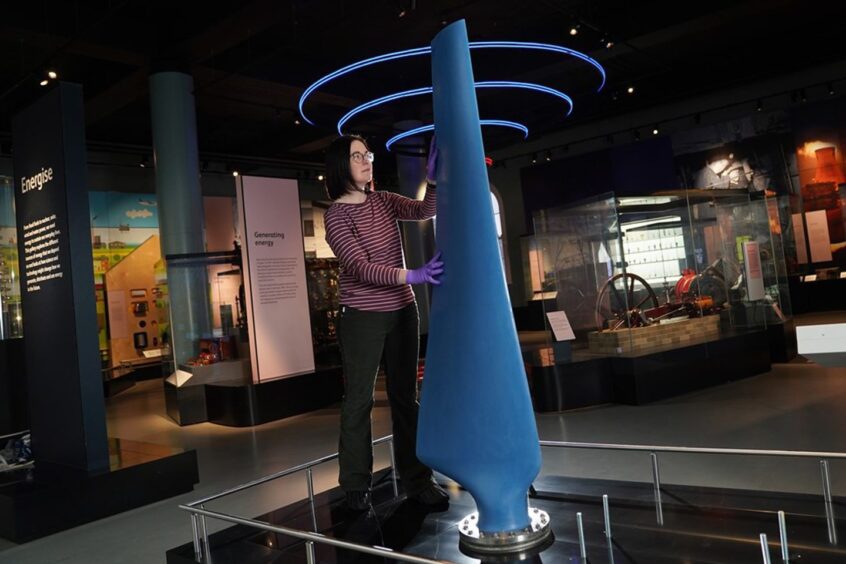
A pioneering tidal turbine developed by Scottish firm Nova Innovation is now on display in the National Museum of Scotland.
The blade was part of the world’s first community owned tidal turbine installed in Bluemull Sound in Shetland in 2014.
The Nova 30 device had a maximum generating capacity of 30kW and powered 30 homes before it was decommissioned in 2016.
The project paved the way for the development of the world’s first offshore tidal farm, the Shetland Tidal Array.
The blade is now on display as part of the National Museum’s ‘Energise‘ exhibit.
The gallery explores the sources, generation and distribution of energy in Scotland over the last 200 years.
National Museums Scotland senior curator of technology Ellie Swinbank said she was thrilled to see the turbine blade on display.
“The turbine blade is a strong example of Scottish engineering and energy, highlighting our position as world-leaders in tidal energy,” Ms Swinbank said.
“I hope the exhibit helps to raise awareness of the importance of sustainable energy technologies, inspiring the engineers and innovators of the future.”
Nova Innovation CEO Simon Forrest said the company is proud to see its very first tidal turbine “taking pride of place” at the museum.
“It is an appropriate way to celebrate Scottish innovation and engineering in our efforts to combat climate change,” Mr Forrest said.
“Our blades have been capturing the clean predictable energy of our tides since 2014, powering homes and businesses across Shetland.”
Scotland a ‘world leader’ in tidal energy
Scotland is at the forefront of the emerging tidal sector, with pioneering projects from Nova Innovation, Simec Atlantis and Orbital Marine Power in development in Shetland and Orkney.
Orkney is also host to the European Marine Energy Centre, which is spearheading research and innovation in wave and tidal energy.
However, the UK marine energy sector is pushing for more strategic support from the UK government as it warns the country is at risk of failing to capitalise on an industry which could deliver up to an estimated £41 billion in economic benefits by 2050.
Recommended for you

 © Supplied by Nova Innovation
© Supplied by Nova Innovation © Supplied by Nova Innovation
© Supplied by Nova Innovation